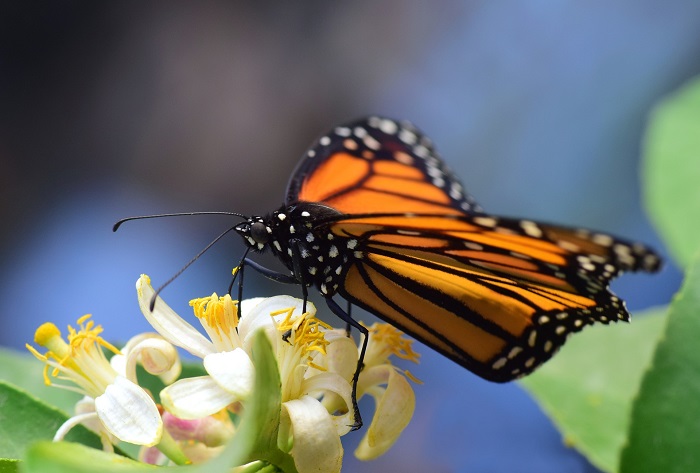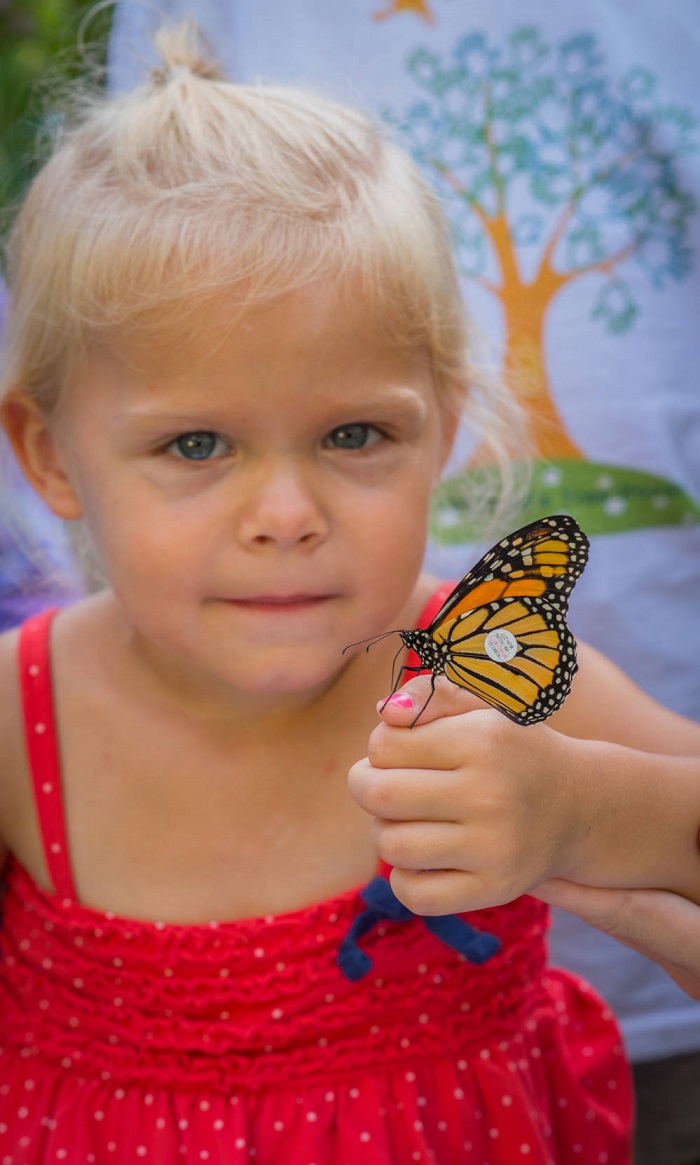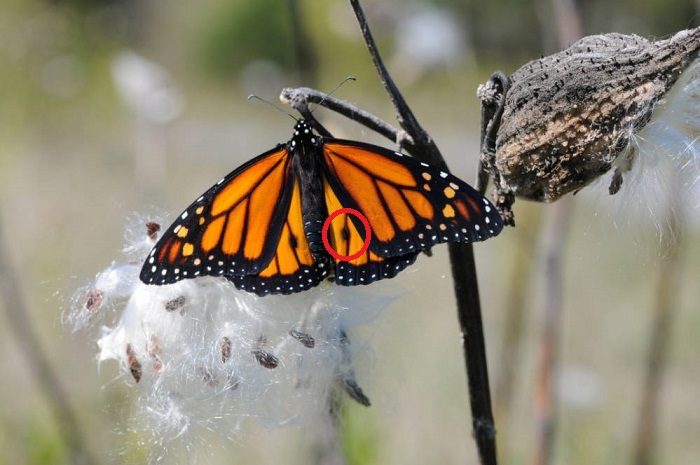Help the Monarch Butterflies! Here’s How.
For immediate release ‐ October 17, 2019
Contact: Jessica Wackes, 919.707.9850. Images available upon request
By Chris Goforth, Head of Citizen Science, and Morgan Gilbert, former NCMNS Intern. Facilitated by Jess Wackes, PR & Marketing Coordinator.

Monarch butterflies are iconic and easily recognized residents of the Americas. They are widely distributed across North America, from Mexico northwards to southern Canada, and from the Atlantic to the Pacific coasts.
What’s special about them?
One of the most notable characteristics of these butterflies is the remarkable 3000-mile journey they make to their overwintering grounds in the Sierra Madre Mountains of Mexico in the fall. From mid-September through mid-October migrating monarchs pass through North Carolina, most prominently in the mountains and at the coast.
See live monarchs today!
Here at the NC Museum of Natural Sciences, we have monarch butterflies in the Living Conservatory, commonly thought of as the “butterfly room”! While they may look the same as the monarchs you see outside, our monarchs are raised on butterfly farms and belong to a non-migratory subspecies generally found throughout the Caribbean, Central America and south to the Amazon River.
What can you do to help?
Monarch populations are in decline due to climate change and disappearing habitats. So what can you do to help? It’s as simple as planting a garden with native milkweed and nectar plants. Then take it a step further – participate in citizen science projects such as the Monarch Watch tagging program and support local and national conservation organizations to preserve this amazing natural phenomenon.
Each weekend at Prairie Ridge we host Citizen Science Saturdays! Come once or come every week — we’re happy to show you how YOU can contribute to science as a citizen scientist! Topics vary, but this season we are tagging Monarchs. Join us in learning about and empowering Monarch conservation.
For more tips, read 5 Ways to Help Pollinators in Your Own Backyard!

What is the tagging process like?
When we tag monarchs, we place a small sticker on the hindwing. On this sticker is an ID number that helps researchers track the migration flight of the butterfly. The sticker is also specifically made light and with a strong adhesive to minimally affect the butterfly during migration.
Catching these lepidopterans is thrilling! You can often catch a monarch at-rest by simply placing a net over it. Once within the net, the catcher then gently pinches the base of all four wings close to the butterfly’s body. In this position, the butterfly is immobile and will not be injured. The scales will not come off easily either. A sticker is then attached to the largest cell located on the hindwing. After a sticker is attached, the butterfly is then released.
Other than placing a sticker, we also record information on each Monarch, including the tag number, sex, status, and date and location where the butterfly was captured. To tell the males apart from the females, we look for a large black spot on a vein on their hindwing. You can see this scent gland circled in red on the hindwing of the male in the image below.

The migration of the Monarch butterflies was discovered by Dr. Fred Urquhart, who developed the first method of butterfly tagging in the 1940s and called on the help of hundreds of citizen scientists to track the migration. After nearly 30 years of tagging and research, Monarchs were finally discovered overwintering in the fir forests of the mountains of Mexico by citizen scientists. Since then, over a dozen sites have been discovered within the area.
The butterflies we tag locally will make their trip into Mexico usually starting in November. Come next March, the butterflies will then migrate back into the United States to lay eggs and begin a new generation.
For more information about our upcoming activities, conservation news and ground-breaking research, follow @NaturalSciences on Instagram, Twitter and Facebook. Join the conversation with #visitNCMNS.

